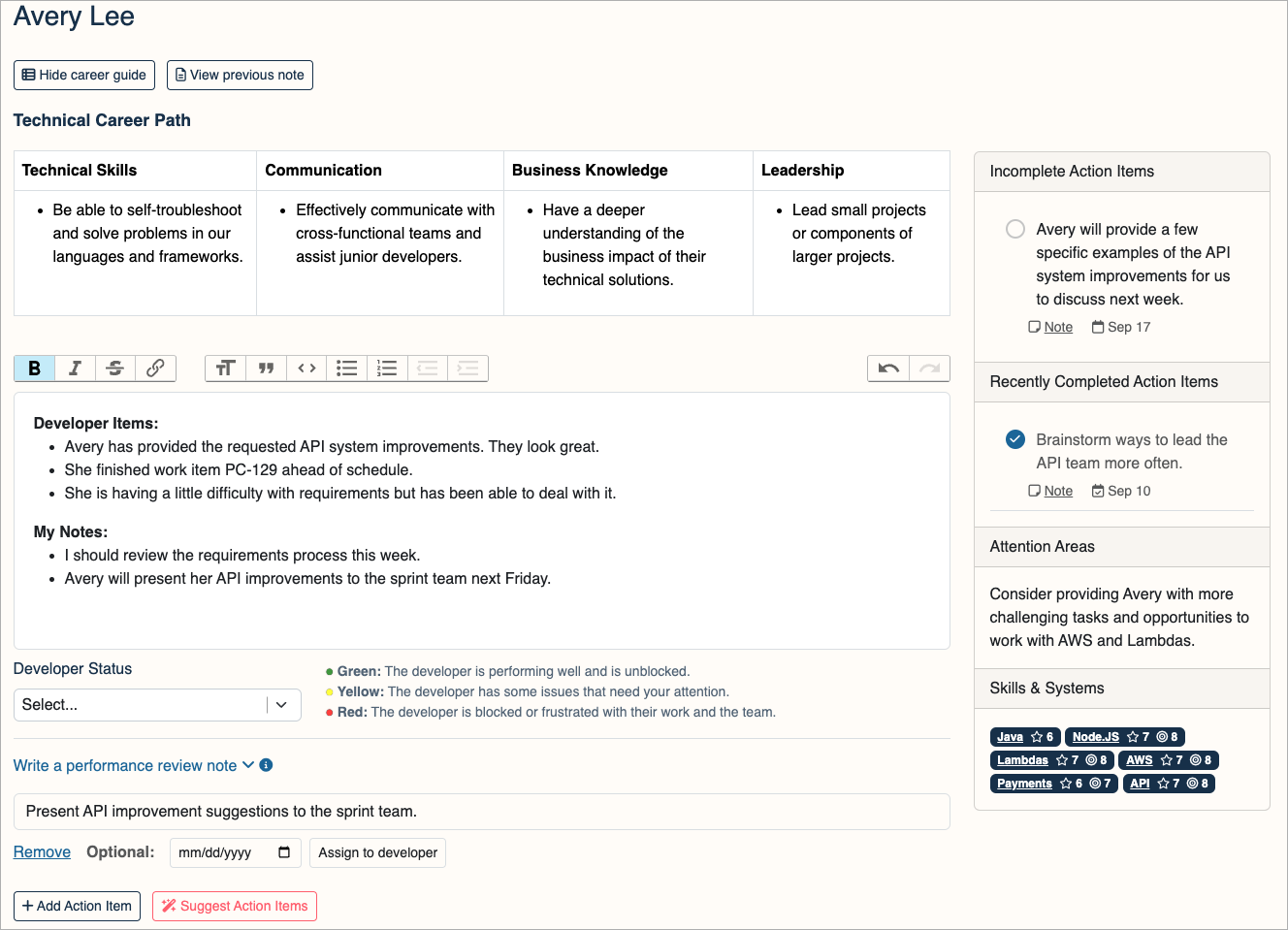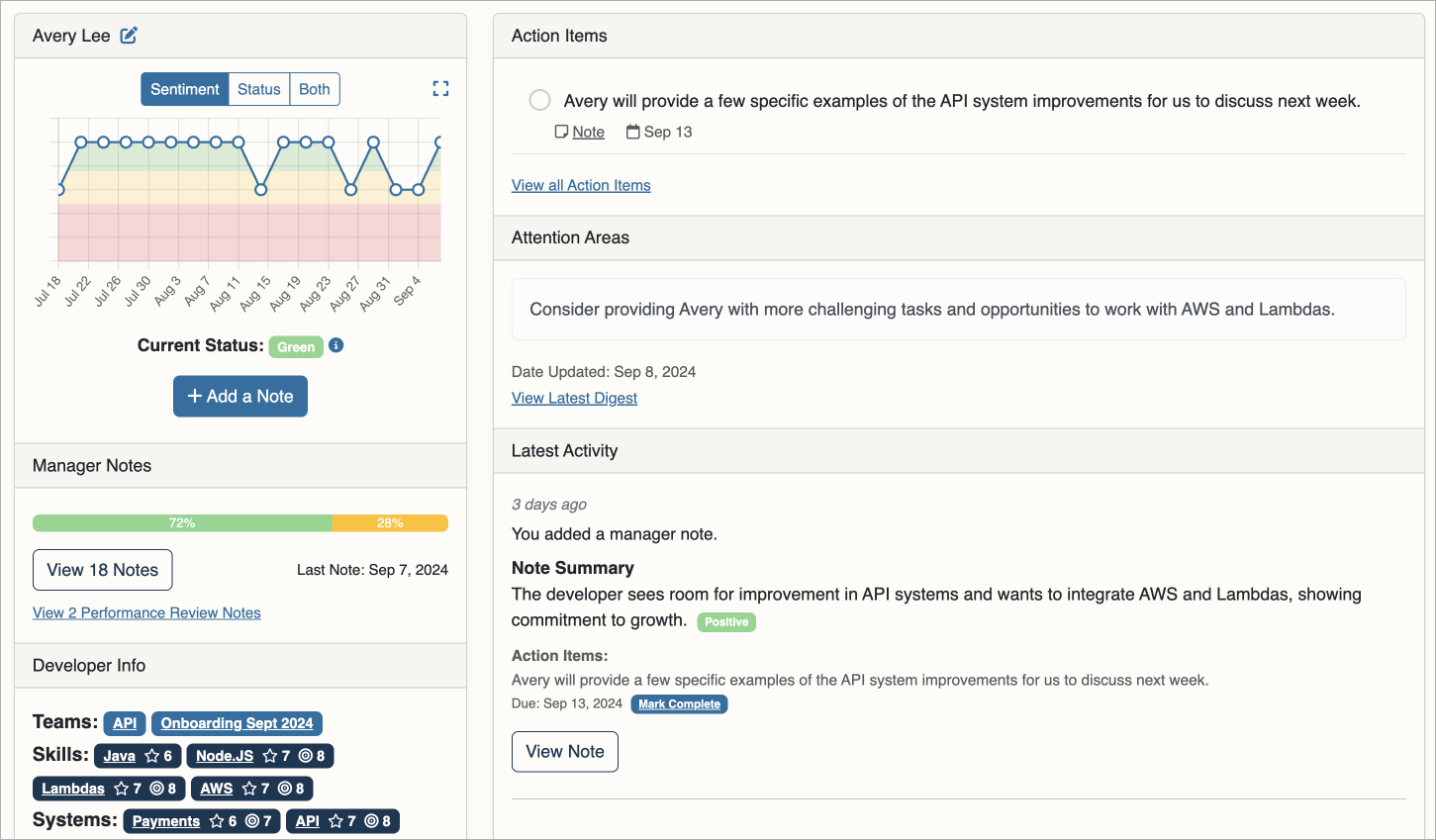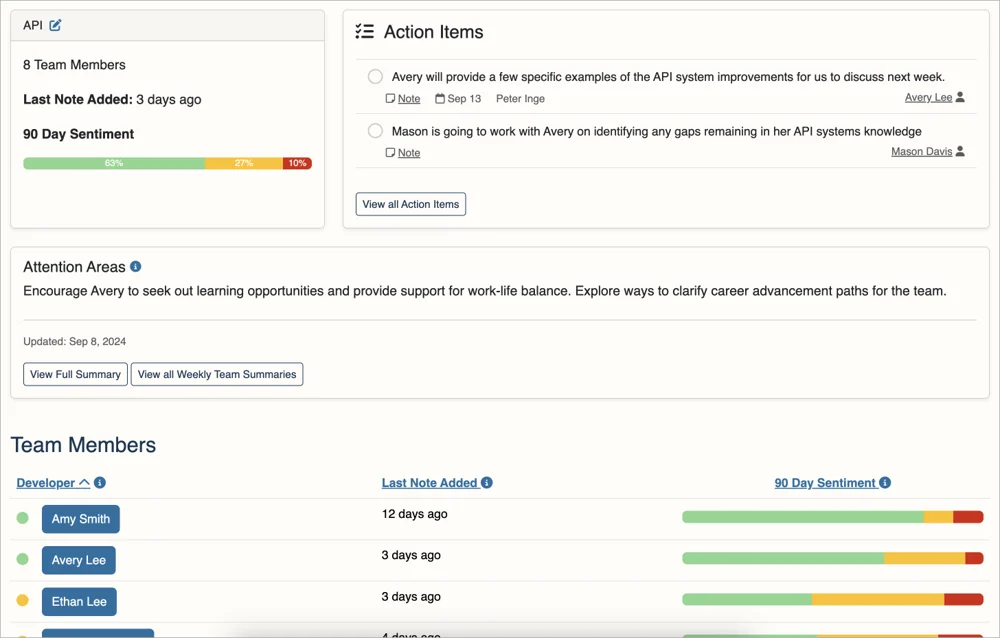How to be an Effective Engineering Manager with DevClarity
Engineering management is tough – DevClarity makes it easier. We provide the structure and tools you need to elevate your 1:1s, build stronger relationships, and drive high performance teams without guesswork.
There is no one thing you can do to become an effective engineering manager. It is a step-by-step process, with each component setting the foundation for the next.
Download as a PDF Guide1. Establishing a Routine 1:1 Process
One-on-ones (1:1s) are the cornerstone of effective management. This is where real management happens - where relationships are built, trust is developed, and an understanding of the challenges your developers face begins.
Without regular 1:1s with your team, you are fighting a losing battle. So, step 1 is establishing a routine 1:1 process. Our Ultimate 1:1s Best Practices Guide for Engineering Managers lays out this process step-by-step.
Once you have established your 1:1 process, DevClarity makes them easier and more impactful by giving you instant access to previous meeting notes, action items, and personalized guidance for each developer - all in one place.

Click to expand image


Click to expand image
2. Driving Developer Performance with Accountability & Action Items
Creating a habit of routine 1:1s is the first step to effective engineering management. However, without clear follow-ups and accountability, performance goals are likely to fall flat and much of your hard work as a manager will be wasted.
The solution is to determine clear action items at the end of each 1:1 discussion and follow up consistently. This is simple, but not easy when you're juggling a full team, urgent development priorities, and constant meetings.
DevClarity gives you the power to track and manage action items seamlessly. Not only can you add your own, but our platform provides you with AI-generated, developer-specific suggested action items in case you get stuck.
With our integrated Career Guide, you can also keep long-term goals top of mind, ensuring each 1:1 moves the needle on both immediate performance and career development.

3. Keeping Your Insights Organized
By this point, you've done the hard work of 1) establishing routine 1:1s with your team and 2) consistently identifying next steps & following up to maintain accountability.
Congratulations! If you truly do this day-in and day-out, you are likely in the top 10% of managers – maybe top 1%!
But now, you're learning a LOT about your team. This information is incredibly valuable, but it can get unwieldy without a good structure to organize it. Scattered information across multiple tools makes it difficult to stay organized and manage well.
DevClarity centralizes all of the key information you need to manage your developer into one place – the individual developer profile. Here you can access 1:1 notes, action items, performance review notes, sentiment trends, skill rankings, and more!

Click to expand image


Click to expand image
4. Maintaining a Pulse on the Team
Once you've laid the foundational pieces of regular communication via 1:1s, accountability through action items, and good organization through developer profiles, the final step is to maintain a close pulse at the team level.
While you've now got great visibility into the individual, sometimes patterns emerge across the team that can be hard to spot without zooming out to see the big picture. For those with multiple teams, this problem is amplified.
DevClarity gives you a high-level view of team sentiment and attention areas, allowing you to spot emerging patterns and provide support where it's needed most.
By staying connected in real-time to team dynamics, you can address potential issues early and ensure everyone is aligned.

5. Connecting the Dots
With DevClarity, you now have a structure for effective engineering management. We equip you with the tools needed to be a top-tier manager by:
- Streamlining 1:1s for clear communication and relationship building
- Driving developer performance with accountability and actionable insights
- Centralizing key information with developer profiles for organized management
- Keeping a pulse on your entire team with team-level views on sentiment and attention areas
By focusing on the people first and leveraging a systematic management process, you can unlock the full potential of your team and become a high-performance engineering manager.